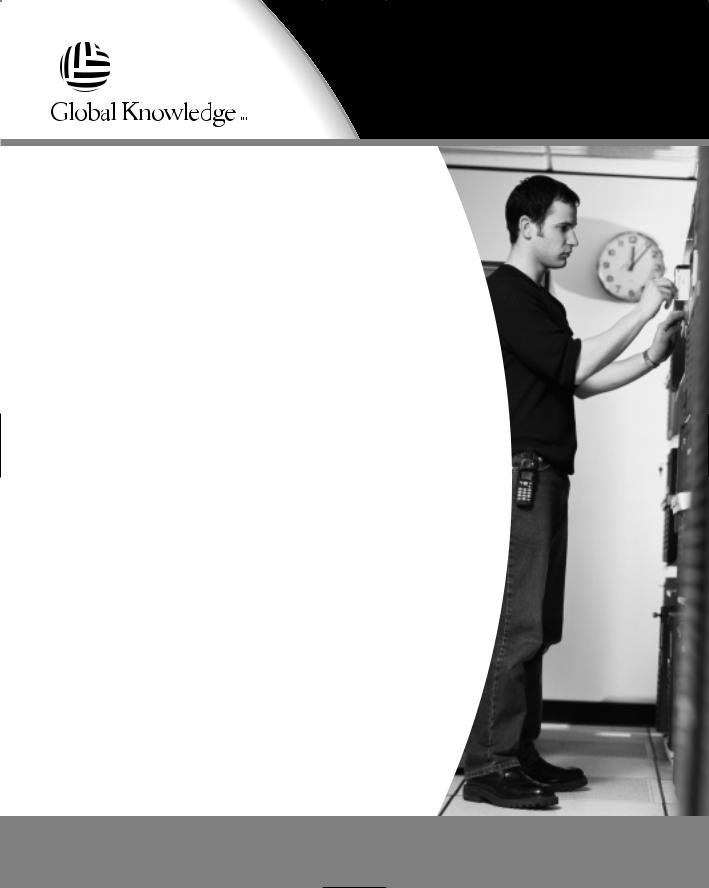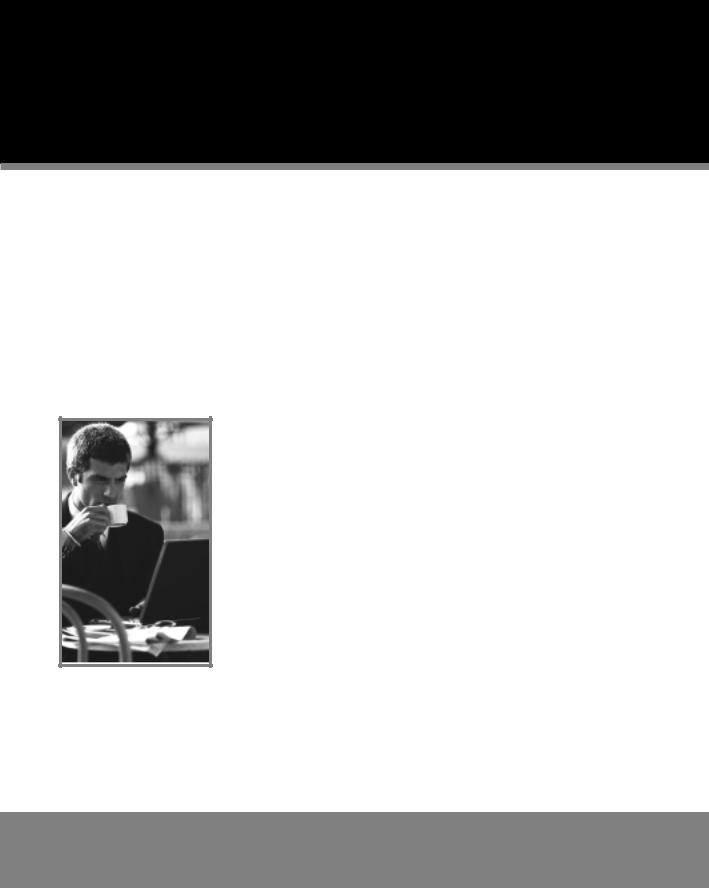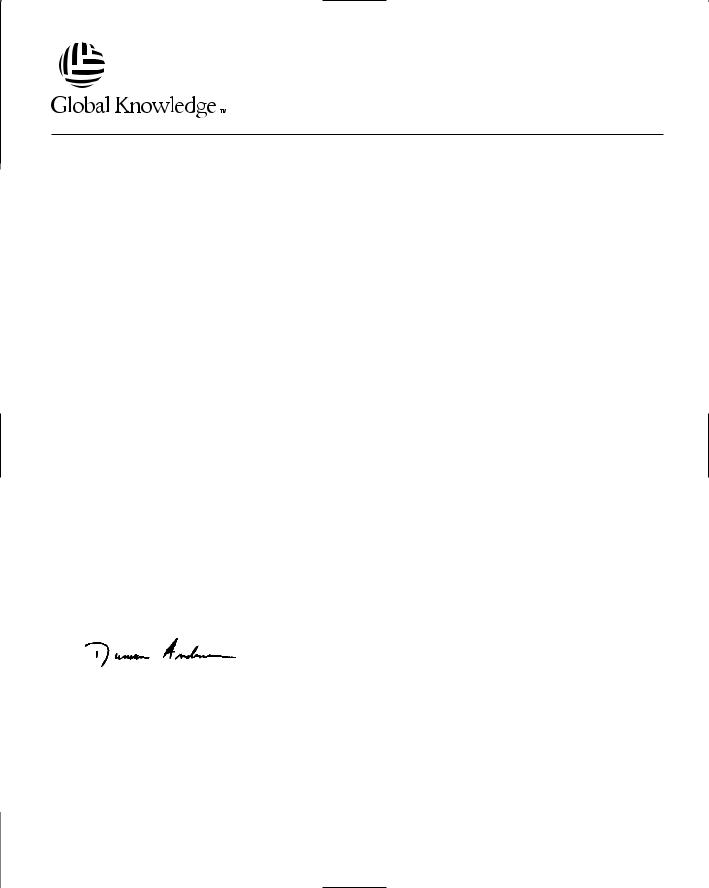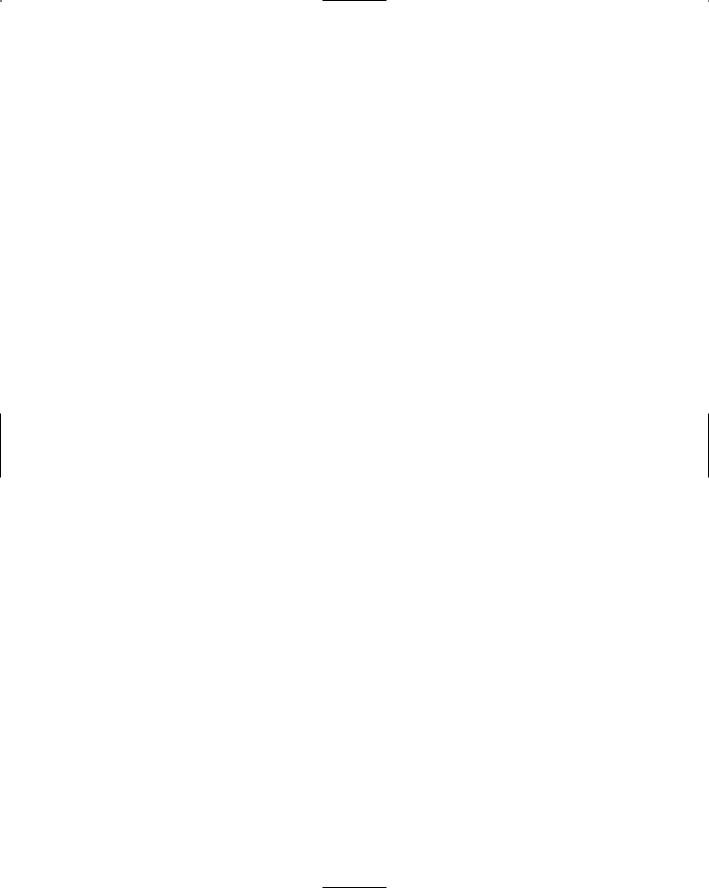

A
access lists, defining Squid, 525–526 accounting logs, Bastille and, 59
ACID. See Analysis Console for Intrusion Databases (ACID)
ACK TCP connection flag, 265
acl tag, Squid access lists and, 525–526 active monitoring, 32–33, 39
Adore, 111
advisories, Red Hat Linux, 42–43, 44–46 aggressive scans, 142
AH protocol. See Authentication Header (AH) protocol
alerts
Firewall Log Daemon e-mail, 563, 564–567
Fwlogwatch e-mail, 570, 579–580 Fwlogwatch Windows pop-up, 581 intrusion detection system (IDS), 202 setting threshold for Fwlogwatch, 578
American Registry for Internet Numbers (ARIN), 454
Ampd service, 59
Analysis Console for Intrusion Databases (ACID), 252–253
anomaly-based IDS applications, 194, 195 anonymous downloads, disabling with Bastille,
63
anti-spoofing rules, 479 antivir -h command, 112 AntiVir for Services, 110, 112
acquiring, 110
command-line arguments, 112–113 installing, 114–116
licensing options, 114, 189 TkAntivir interface for, 116–123, 189 types of viruses detected by, 111
Apache Web server
checking HTML logs via, 584–587 hardening with Bastille, 61–62
Index
IDS applications and, 205 Appsend, 591
Asia Pacific Network Information Center (APNIC), 454
Astaro Security Linux, 442
asymmetric key encryption, 17, 18–19. See also public key encryption
Atd service, 59 AtStake Web site, 12
auditing procedures, 31–34, 39
firewalls. See firewall testing tools; firewalls locking down network hosts, 31 protecting network perimeter, 33 securing data across the network, 32–33
auditing stations, 32–33, 192 Authentication Header (AH) protocol, 403 authentication process, overview of
network, 300–301 authentication schemes, 300
firewalls and, 448
IPSec. See IP Security Architecture (IPSec) Kerberos v5, 300, 303, 319–344
one-time passwords (OTP), 300, 303–304, 305
r-command authentication, 368–370 authentication servers, Kerberos, 321 authentication tokens, Kerberos, 300 authorized use banners, Bastille and, 57
B
backward compatibility, open source software and, 7
bandwidth, reduction of by proxy caching, 510 Bastille, 55–77
acquiring, 64
anonymous download disablement, 63 Apache Web server and, 61–62 authorized use banners and, 57 chroot named and, 59–60
compilers, disablement of, 57–58
637

638 Index
configuration changes, undoing, 74–77 console access restrictions, 58 daemons, disablement of, 59, 63 downloading RPM updates, 55 installing and configuring, 64–74 ipchains script and, 55
limiting system resource usage, 58
log for tracking configuration changes, 65, 600–604
logs, adding additional, 59 password aging and, 56
password protection of LILO prompt, 56–57
password protection of single-user mode, 57
print disablement, 62–63 r-protocol disablement, 56 rebooting, disablement of, 57 restrictive permissions, applying, 55 second root accounts, 56
Secure Shell (SSH) and, 59
TCP wrapper optimization with, 57 troubleshooting, 108
versions of, 63–64 Bliss virus, 110, 111 Blowfish, 363
Boolean operators,Tcpdump filters and, 275–276
boot sector viruses, 111, 117–120 Borderware, 442
brute force attacks, 18
buffer size, Firewall Log Daemon and, 564 bug fixes, Red Hat Linux, 42–43, 44
accessing, 45
case study for applying, 46–47 built-in targets, specifying packet
destination by, 462 bzip program, 10
C
cache aborted requests, proxy caching and, 510
Cache Digest protocol, Squid and, 514 cache directory, Squid
locating largest object in, 540 size of, 539–540
specifying location of, 523–524 cache_dir tag, Squid cache data
storage and, 523–524
CacheRaq4, 515
CacheXpress, 515
chains, 461–463, 475–477. See also Ipchains; Iptables
Checkpoint Firewall-1, 442 Cheops, 151–165
acquiring, 154
connecting remote systems with, 159–160 features overview, 151–152
installing and configuring, 160–164 mapping relations between computers
with, 157
monitoring options, 157–158 Nmap and, 153
plug-ins, backups of, 165 Queso and, 153
required libraries and settings, 154–155 SNMP protocol and, 152–153
user interface, 155–156 Cheops-ng, 159–160 chmod u+s command, 22
chroot named, disablement of, 59–60 CIFS. See Common Internet File System
(CIFS) Cisco Routers, 442
Classless Internet Domain Routing (CIDR) notation, 138
clear text passwords, 300 client, Kerberos, 321
command-line interfaces, problems with, 6–7 command logging, sudo and, 77, 79, 93–96 Common Internet File System (CIFS), 301 common object file format (COFF), 111 compilers, disabling with Bastille, 57–58 compress command, 10
Connectiva, 441
console access, restricting with Bastille, 58 content filtering, firewalls and, 448 continuous scans, Nessus, 181
copyleft movement, 4–5 Corel Linux, 441
corrections, Red Hat Linux, 42–43, 44–46 Courtesan Consulting, 77
credential cache, Kerberos, 323–324 destroying with kdestroy, 333–334 listing credentials in with klist, 333
credentials, network authentication process and, 300

D
daemons
disabling unnecessary with Bastille, 59 limiting open on firewall, 545
databases
burning Tripwire to CD, 215, 219–220 creating Kerberos, 325
IDS logging to, 202
querying Snort from remote host, 250–251 Snort logging to, 238–239, 243–250 starting Tripwire, 208, 212–213
Debian (.deb) packages, 10, 11 defrag Snort plug-in, 232 demilitarized zone (DMZ), 107
denial-of-service (DoS) attacks, 123–124, 448 destination IP address, 450
destination ports, 450 destination-unreachable ICMP message name,
473
detached scans, Nessus, 180, 181, 182–184 DHCP BOOTP Client, port number for, 50 DHCP BOOTP Server, port number for, 50 dial-up connections, 506
differential scans, Nessus, 180–181, 182–184 digital encryption standard (DES) encryption,
443
digital signatures, 16 creating with GPG, 29
verifying tarball with GPG, 30
disk random seek time, Squid and, 516, 538 distributed denial-of-service (DDoS) attacks,
123–125
AntiVir scanning for, 111 preventing with firewalls, 446 zombie zappers for, 125–129
Domain Name Service (DNS) protocol Netcat connectivity checks for, 557 Netcat port scans for, 554
port number for, 50
DoS attacks. See denial-of-service (DoS) attacks
downloads, security of, 16, 107 dpkg -i command, 11
Dynamic Host Configuration Protocol (DHCP), 59
Index |
639 |
E
e-commerce, 360 e-mail
clear text passwords and, 300
Tripwire configuration for, 214, 218, 258 e-mail alerts
Firewall Log Daemon (Firelogd), 563, 564–567
Fwlogwatch, 570, 579–580, 584 e-mail servers, placement of, 107 e-mail viruses, 111, 117–120 EasyChains GUI tool, 489 echo-reply ICMP message name, 473
echo-request ICMP message name, 473 egress, 450
ELF-style files, 111
employees, communicating firewall information to, 548–549
--enable-save-kb option, 182, 183 --enable-save-sessions option, 182 Encapsulating Security Payload (ESP), 403 encryption, 16–17
asymmetric, 17, 18–19 firewalls and, 448 importance of, 16–17 one-way, 17, 20–21
overview of network-based, 354–355 public key. See public key encryption symmetric, 17–18
encryption applications, 17
GNU Privacy Guard (GPG), 17, 21–27 OpenSSH, 361–367
Pretty Good Privacy (PGP), 17 encryption protocols
IPSec, 304, 396–401
Secure Shell (SSH). See Secure Shell (SSH) Secure Sockets Layer (SSL), 304, 360 susceptibility to packet sniffing, 301, 304 See also authentication schemes
ESP. See Encapsulating Security Payload (ESP) Eth0 NIC address, 478
Eth1 NIC address, 478 Eth2 NIC address, 478
EtherApe, 262–263, 288–289 acquiring, 12, 290
configuring to view network traffic, 290–292

640 Index
installing, 290 troubleshooting, 297
Ethereal, 262, 263, 279–281 acquiring, 12
capturing packets with, 284–288, 355–359, 381–384
filtering with, 283, 284–288 GUI interface (panes), 280
installing and configuring, 283–284 options available in, 281–282 troubleshooting, 296–297
ethereal command, 283
eTrust Intrusion Detection, Computer Associate’s, 204
Ettercap, 204
Executable and Linking Format (ELF), 110, 111
expressions,Tcpdump, 271–275
F
F-Secure VPN for Windows, 443 false positives, intrusion detection systems and, 193–194
fault tolerance, intrusion detection applications and, 197–198
fee-based GPL software, 5
file system verification software, 202 File Transfer Protocol (FTP)
clear text passwords and, 300 disabling access by, 546 disabling FTP daemons, 63 Netcat port scans and, 554
one-time passwords (OTP) and, 306, 318–319
port number for, 50 Squid support of, 514
filter tables, 461 filters
Ethereal, 283, 284–288 Tcpdump, 268–276 Tcpdump-style Snort, 237
FIN TCP connection flag, 265 fingerprinting, operating system, 134–135 Firelogd. See Firewall Log Daemon (Firelogd) Firestarter GUI tool, 488, 490–499
acquiring, 491 configuring, 491–494
creating ToS associations, 498, 499
installing, 491
masquerading configurations, 498, 499 saving packet logs, 498
setting rules, 494–497 troubleshooting, 505
Firewall Builder GUI tool, 489 firewall GUI tools, 488–489, 505 applications currently in development, 490
benefits of using, 489
creating personal firewall with, 490–499 EasyChains, 489
Firestarter, 488, 490–499 Firewall Builder, 489 Knetfilter, 488
Mason, 488
Firewall Log Daemon (Firelogd), 563–569, 597
acquiring, 563, 568
configuring and compiling, 568–569 e-mail reports sent by, 563, 564–567 reading log files generated by other fire-
walls, 568
syntax and configuration options, 563–564 firewall log tools
Appsend, 591 Firelogd, 563–569 Fwlogsum, 591 Fwlogwatch, 569–590
IP Firewall Accounting (IPFA), 591 Ipchains logger, 590
IPmeter, 591 LogGrep, 590–591 Mrtg, 591–592 Ntop, 592
Open Correlation, 591 firewall logs
logging packets, 448–449, 471–472, 482 logging port scans, 545, 549–550
size of and system resources, 547 See also firewall log tools
firewall scripts, 488–489 firewall testing tools, 550–551
ipchains -C command, 551 Netcat, 552–558
SendIP packet forger, 558–562 Telnet, 551–552
firewalls, 446–447 anti-spoofing rules, 479

Index 641
auditing, 33–34, 544–550, 544–550 authentication and encryption by, 448 building Linux-based personal, 449,
474–477, 490–499 configuring, 478–482 content filtering by, 448
corporate environments and, 506 DoS/DDoS attacks and, 446, 448 FreeS/WAN interoperability and, 442 intrusion detection systems as
supplement to, 203
IP and port filtering by, 448 IP forwarding and, 453–456 IP spoofing and, 545, 546 IPSec support by, 403 Kerberos v5 and, 350–351
Linux kernel configuration for, 460 logging. See firewall logs
logging port scans, 545, 549–550 masquerading IP traffic, 446–447, 456–458,
467–471
modem banks and, 470 monitoring system resources, 545 Netcat port scans, 552–558 network differentiation with, 448 Nmap and, 134, 141
open ports/daemons on, 545, 546, 551–553
packet accounting and, 460, 483–487 packet filtering, configuring, 459–460 packet filtering rules, adding, 472–473 packet redirection by, 448
passive monitoring by IDS systems and, 453
port redirection and, 477–478 probing with SendIP, 558–562
remaining informed of new developments in, 545, 549
role of tables and chains in, 461–471 as routers between networks, 447 rules database, checking, 545, 548, 551 Squid Web Proxy Cache server and,
538–539
suspicious users and logins and, 545, 547 system requirements for, 452
TCP connections, allowing, 479–480 Telnet port scans, 551–552
testing tools. See firewall testing tools troubleshooting, 505–506
UDP filtering, 481–482
verifying connectivity, 545, 548–549 See also Ipchains; Iptables
fixes, Red Hat Linux, 42–43, 44 accessing, 45
bug fix case study, 46–47 flags,TCP handshake, 265 FORWARD chain, 461, 462
forwarding routers, Linux system as, 447, 453–456
Free Secure WAN (FreeS/WAN), 402–438 acquiring, 402, 404–405, 441–442 compiling Linux kernel to run, 407–416 configuring host-to-host VPN with,
420–433
DES encryption and, 443 downloading, 404–407 GMP library and, 443 installing, 406–407, 441–442
interoperability issues, 403, 442–443 IPSec protocol implementation, 403–404 Linux versions compatible with, 443 protocols used by, 402–403
recompiling into Linux kernel, 417–420 testing IP networking, 420–424
testing IPSec configuration, 419–420 free software licensing, 3–4
See also GNU General Public License (GPL)
FreeBSD, 442
Freegate, 442
FreeS/WAN. See Free Secure WAN (FreeS/WAN)
Freshmeat Web site, 12, 13–14
FTP. See File Transfer Protocol (FTP) ftp Kerberos client application, 342 Fwlogsum, 591
Fwlogwatch, 569–590, 597 acquiring, 570
alert threshold for automatic notification, 578
automatic response options, 581–584 blocking of hosts by, 569, 570, 578,
582–584
CGI scripting and, 584–590 command options, 571–573 configuration files, 575–578 custom-created commands and, 570 e-mail alerts, 570, 579–580, 584

642 Index
Interactive mode, 571 Log Time mode, 571
notification options, 579–581 Realtime mode, 570–571
report generation, 570, 571, 573–575, 582 sorting features, 590
troubleshooting, 598
Web server offered by, 590 Windows pop-up message alerts, 581
Fyodor, 133
G
Gauntlet firewall GVPN, 442 Gibraltar, 442
Gimp toolkit, 169 gkadmin GUI utility, 329 gkadmin interface, 328–329
GMP library, Pluto and, 443 Gnome, 117
Gnome Service Scan (GSS), 129–132 acquiring, 129
benefits of using, 131
ethics of scanning other people’s ports with, 189–190
installing, 132
required libraries and settings for, 130–131 GNU General Public License (GPL), 3–5
advantages of using, 38 fee-based software and, 5
Gnu is Not Unix (GNU) organization, 3 GNU Privacy Guard (GPG), 17, 21–27
acquiring, 21 deploying, 21–27 encrypting files with, 29
Pretty Good Privacy (PGP) and, 26 public key can’t be found message, 38 verifying installation of, 21
verifying tarball signatures with, 30 GNU Zip programs, 10
Gopher, 50, 514
GPG. See GNU Privacy Guard (GPG)
gpg --decrypt managerreport.txt.gpg > managerreport.txt command, 29
gpg --encrypt --r public_keyname_of_recipeint managerreport.txt command, 29
gpg --genkey command, 22 gpg --sign command, 25
gpg --verify signaturefile.tar.gz taballpackage.gz command, 30
gpg: waiting for lock message, 27
GPL. See GNU General Public License (GPL) graphical user interfaces (GUIs)
command-line, 6–7 Ethereal, 280 firewall, 488–489
version to version changes in, 8 GSS. See Gnome Service Scan (GSS) GTK toolkit, 169
GUI. See graphical user interfaces (GUIs) gunzip program, 10
gzcat program, 10 gzip command, 10 gzip program, 10
H
hack attacks brute force, 18
clear text authentication and, 300–301 man-in-the middle, 301–302, 303 open door, 355–359
password cracking, 18, 302 sniffing attacks, 18, 301–302
hardening, system, 42, 450 accessing system logs, 96–97
applying Red Hat Linux errata, 43–47 with Bastille software, 55–63, 77 controlling and auditing root access with
sudo, 77–80, 90–96
determining which ports to block, 52–53 manually blocking ports, 53–54 manually disabling unnecessary
services, 47–49, 53–54 operating system updates, 42–43 testing of system, 44
hash files
generating with md5sum command, 30 one-way encryption and, 17, 20–21
HCP. See Hypertext Caching Protocol (HCP) Heimdall Linuxconf Firewall, 490
host-based intrusion detection systems, 195, 196
Hostsentry, 205 log analyzers, 196
PortSentry, 204, 220–228 system drive analyzers, 196 traffic identification by, 200–201

Tripwire, 204, 206–220
host-to-host Virtual Private Networks (VPNs), 395
configuring public key encryption, 424–433
creating new tunnels, 434–436 testing IP networking, 420–424
host# gpg --clearsign yourname command, 29
hosts, locking down network, 31 Hostsentry, 205
HP OpenView, 152
HTML reports, Fwlogwatch and, 571, 573, 574–575, 584–590
HTTP. See Hypertext Transfer Protocol (HTTP)
HTTP GET command, 280–281 http_access tag, Squid access and, 526–528 http_decode Snort plug-in, 232 http_port tag, Squid HTTP ports and,
522–523
HTTPS. See Secure Hypertext Transfer Protocol (SHTTP)
Hypertext Caching Protocol (HCP), 515 Hypertext Transfer Protocol (HTTP)
disabling access by, 52, 546 port number for, 50 Squid and, 514, 515
I
I/O cards, firewalls and, 452 -I option, 11
i810 chipset, Red Hat Linux 6.2, 46–47 ICANN. See Internet Corporation for Assigned Numbers (ICANN)
ICMP types, Iptables and, 473–474, 483 IKE. See Internet Key Exchange (IKE) proto-
col
illicit servers,Trojan horses and, 16 ingress, 450
Initial Sequence Number (ISN), 265, 267 INPUT chain, 461, 462
insane scans, 142
installation support, lack of open source software, 6
Internet Cache Protocol (ICP), 514 Internet Corporation for Assigned Numbers
(ICANN), 454
Index 643
Internet Engineering Task Force (IETF), 396–397
Internet Explorer, configuring as Squid proxy client, 533–534
Internet Key Exchange (IKE) protocol, 401–402, 403
Internet Message Access Protocol (IMAP), 50, 52
Internet registries, 454
Internet Security Association and Key Management Protocol (ISAKMP), 401
Internetwork Packet Exchange/Sequenced Packet Exchange (IPX/SPX), 395
intrusion detection system (IDS) applications
alterting features, 200, 202
automatic system reconfiguration by, 200 eTrust Intrusion Detection, 204 Ettercap, 204
false positives by, 193–194 fault tolerance and, 197–198
file system verification by, 200, 202 host-based, 195, 196
Hostsentry, 205
log analysis applications, 196
logging enhancement with, 200, 201–202 NetProwler, 204
network-based, 195, 196–197, 199 Network Flight Recorder, 204 PortSentry, 203, 204, 220–228 real-time detection by, 195 RealSecure, 204
required supporting applications, 205 rules and, 194
Shadow, 204 signatures and, 194 Snort, 203, 204
system drive analyzers, 196 threshold enforcement by, 200, 202 traffic identification by, 200–201 Tripwire, 203, 204, 206–220
intrusion detection systems (IDS), 32–33, 141, 192–194
additional resources on, 259
factors to consider before implementing, 199
as firewall supplement, 203 interval-based detection by, 195 passive monitoring by, 453

644 Index
selecting best strategy for, 203 services provided by, 200–202 strategies used to detect intrusions,
194–195
switched networks and, 199 system performance and, 206
testing configuration with Nmap, 134, 141 IP addresses, 450, 451
IP Firewall Accounting (IPFA), 591 IP forwarding, 447, 453–456
IP networking, testing VPN, 420–424 IP packet accounting, 460, 483–484 IP packet rules, 450, 451
anti-spoofing rules, 479 checking, 545, 548, 551 flushing, 466–467
Ipchains and, 464–467, 472–473, 548 listing, 464–465
restoring, 467 saving, 465, 548 setting, 464–467
IP packets
counting, 460, 483–484 logging, 448–449, 471–472, 482
tracking by IDS systems, 200–201 IP protocol, 396
IP Security Architecture (IPSec), 304, 396–400
closing a tunnel with, 438 common commands, 435
FreeS/WAN interoperability issues, 403, 442–443
Internet Key Exchange (IKE) protocol and, 401
starting a tunnel with, 435–436 testing FreeS/WAN implementation,
419–420
VPN tunneling and, 400–401
IP spoofing, 395–396, 545, 546, 555–556 Ipchains, 446–447, 451, 461–462
acquiring, 446
adding packet filtering rules with, 472–473 allowing TCP connections, 479–481 anti-spoofing rules, 479
Bastille and, 55
built-in targets, packet destination and, 462 creating policies with, 464
default tables and chains, 461–462 firewalling UDP, 481
flushing rules with, 466–467 listing tables and chains, 464–465 logging packets, 471, 482
masquerading IP traffic with, 457, 459, 467–468
packet accounting and, 483–484 personal firewall configuration and,
474–477
port redirection and, 477–478 PortSentry and, 227, 449 restoring rules with, 467 saving rules with, 465–466, 548
setting policies and rules with, 464–467 setting Type of Service (ToS), 486–487 specifying interfaces, 463 troubleshooting, 505, 506
user-defined chains and, 462–463, 475–477 ipchains -C command, testing firewalls with,
551
Ipchains logger, 590 IPmeter, 591
IPSec. See IP Security Architecture (IPSec) ipsec --copyright command, 434
ipsec --help command, 434 ipsec --version command, 434
ipsec auto --down command, 434
ipsec auto --rereadsecrets command, 434 ipsec auto --up command, 434
ipsec bark command, 434 ipsec look command, 434 ipsec pluto command, 434 ipsec whack command, 434
Iptables, 446–447, 451, 461–462, 597 acquiring, 446
adding packet filtering rules with, 472–473 allowing TCP connections, 480–481 anti-spoofing rules, 479
built-in targets, packet destination and, 462 commonly used modules, 471
creating policies with, 464 default tables and chains, 461–462 firewalling UDP, 482
flushing rules with, 466–467 ICMP types and, 473–474 listing tables and chains, 464–465 logging packets, 471, 472, 482
masquerading private networks, 457, 459 packet accounting and, 483–484
port redirection and, 477–478

restoring rules with, 467 saving rules with, 465–466, 548
setting policies and rules with, 464–467 setting Type of Service (ToS), 486–487 specifying interfaces, 463 troubleshooting, 505–506
user-defined chains and, 462–463, 475–477 IPv6, 397
IPv6 protocol, 395
IPX/SPX. See Internetwork Packet Exchange/Sequenced Packet Exchange (IPX/SPX)
IRE Safenet/SoftPK, 442
ISAKMP. See Internet Security Association
and Key Management Protocol (ISAKMP)
islands, IPv6, 395–396
J
jb dynFW, 490
John the Ripper password-cracking program, 302
K
kadmin command, Kerberos
adding principals to database with, 326–327, 336
creating new policies with, 330 establishing client trust relationships with,
337–344
managing principals with, 328 updating client Key table files with,
328–329
kadmin.local command, Kerberos, 325 KB saving, 182–183, 190
KDC. See Key Distribution Center (KDC) kdestroy command, Kerberos, 333–334 Kerberized hosts/applications, 319 Kerberos v5, 300, 303, 319–320
accessing kerberized network daemon, 340
adding principals to database, 326–327, 336, 339
administration of, 325, 335 authentication process, 323–324 authentication server, 321
backup of KDC database, 349–350 benefits of using, 319, 320–231
Index 645
client applications, 341–342 client configuration, 342–344 creating new policies, 330
creating new principals database, 325, 335–336
credential cache, 323–324 eliminating credential cache, 333–334 establishing client trust relationships,
337–344
firewalls and, 350–351, 546 installing, 334–335
Key Distribution Center (KDC), 319, 320–321, 323–324
key table, 323
listing current credentials, 333 managing principals, 328 multiple realms, 351
obtaining TGT from KDC, 330–333 OpenSSH authentication by, 363 password format, 329
policies, 323, 330 principals, 322–323 realms, 319, 320
removing principles from keytabs, 349 Ticket Granting Ticket (TGT), 321,
323–324 tickets, 321–322
time stamping by, 324 troubleshooting, 340–341 updating Key table files, 328–329
kernel log entries, Firelogd and, 563 Kernel IPSec (KLIPS), 404 ketremove option, 349
Key Distribution Center (KDC), 319, 320–321
backup of KDC database, 349–350 configuring, 334–337
role in Kerberos authentication process, 323–324
key pairs, 17, 18–19 key table, Kerberos, 323
kinit command, Kerberos, 323–324, 330–333 Knetfilter GUI tool, 488
Kondara, 11
kpasswd Kerberos client application, 342 krlogin Kerberos client application, 342 krsh Kerberos client application, 342 ksu Kerberos client application, 342

646 Index
L
L0phtCrack password-cracking program, 18, 302
L2F. See Layer 2 Forwarding (L2F) protocol
L2TP. See Layer 2 Tunneling Protocol (L2TP) last command, 96, 547
lastlog command, 96–97
Layer 2 Forwarding (L2F) protocol, 396 Layer 2 Tunneling Protocol (L2TP), 396,
400–401 Layer 3 security, 397
LILO prompt, password protection of, 56–57 Linux
flavors of, 10–11 licensing of software, 3–5
problems with Linux-based software, 6–8 RAM and Red Hat Linux 6.2, 46–47 reasons for popularity of, 38–39
See also open source software Linux/Bliss virus, 110, 111 Linux kernel
compiling to run FreeS/Wan, 407–416 configuring for firewalls, 460 recompiling FreeS/WAN into, 417–420
Linux Router Project, 442 Linux viruses, 110–112
boot sector, 111 Linux/Bliss, 110, 111
Loadable Kernal Module (LKM) root kits, 111
scanning for. See virus scanners LinuxLinks Web site, 12
LKM root kits. See Loadable Kernal Module (LKM) root kits
load balancing, proxy caching and, 510 Loadable Kernal Module (LKM) root kits, 111 lock downs, network, 31
log analysis applications, 196 log files
accessing system logs, 96–97 accounting, 59
adding new with Bastille, 59
Firewall Log Daemon (Firelogd) and, 563, 564, 568
firewalls and, 448–449
intrusion detection systems and, 201–202 Ipchains, 471
Iptables, 471
reading files generated by other firewalls, 568
simplifying display of with enhancers, 97–102
Snort database, 238–239 Snort packet sniffing, 236, 241 sudo command, 77, 79, 93–96
logging enhancers, 97–102 Scanlogd, 100–101 SWATCH, 97–99 Syslogd-ng, 101–102
LogGrep, 590–591 logins
checking for suspicious, 545 disabling, 49
Lynx, configuring as Squid proxy client, 532–533
M
m4 utility, 169 macro viruses, 111
mailing lists, firewall-related, 549 make command, 11
makefiles, tarball, 10, 11 Makinen,Tuomo, 147
malware, open source software as, 8–9 man-in-the middle attacks, 301–302, 303 management, communicating firewall infor-
mation to, 548–549 managerreport.txt file, 29 Mandrake, 11
mangle tables, 461, 462 Mason GUI tool, 488
masquerading IP traffic, 446–447, 455, 456–458
with Ipchains, 467–468, 471 with Iptables, 468–471
setting with Firestarter, 498, 499 troubleshooting, 506
md5sum command, 30
Message Digest 5 (MD5) algorithm, 305 Microsoft, Kerberos v5 and, 351 Miller,Todd, 77
minifrag Snort plug-in, 232 MIT Web site, 27
modem banks, 470
MonMotha’s IPTables script, 488–489 Mrtg, 591–592
multihomed hosts, 450, 454

N
N2H2, 515
NAT. See Network Address Translation (NAT) nat tables, 461, 462
Nessus, 165–166
client/server relationship, 167–169 continuous scans, 181
creating new users, 174
detached scans, 180, 181, 182–184 differential scans, 180–181, 182–184 disabling gtk support, 171
firewalls and, 546
KB saving, 182–183, 190 plug-ins, 166, 167, 173 private keys, losing, 175 reports generated by, 168–169
required libraries and settings for, 169–170 RPM-based installation, 172
rules database and, 174–175 running a scan with, 176–179 tarball-based installation, 170–171 updating, 179–180 Windows-based, 169
NetBIOS Session Service, 50 NetBSD, 442
Netcat, 552–558 acquiring, 552 command syntax, 554
exercise in using, 557–558 IP spoofing with, 555–556 options available in, 553–554
port scanning with, 553, 554–555 testing DNS connectivity with, 557 testing port redirection with, 556 use by hackers, 560
NetFilter-1, 490
Netfilter4.1, 515 netfilters, 446
NetProwler, Symantec’s, 204
Netscape Navigator, configuring as Squid proxy client, 530–531
Network Address Translation (NAT), 457–458, 508, 510–511
network authentication, 300–301 encryption protocols and, 304 Kerberos v5 and. See Kerberos v5
one-time passwords (OTP) and. See onetime passwords (OTP)
Index 647
susceptibility of encrypted protocols and, 301
theft of network passwords by hackers, 301–302
Virtual Private Networks and. See Virtual Private Networks (VPNs)
network-based intrusion detection
system (IDS) applications, 195, 196–197 eTrust Intrusion Detection, 204
Ettercap, 204
as firewall supplement, 203 NetProwler, 204
Network Flight Recorder, 204 RealSecure, 204
Snort, 204, 229–253 switched networks and, 199
network encryption, 354–355 e-commerce transactions and, 360 insecure protocols for, 354–355, 367,
368–370
OpenSSH and, 361–367 packet sniffing over unsecured
networks and, 355–359
Secure Shell (SSH) and, 367–368, 371–381 trying to capture encrypted traffic,
381–384
Virtual Private Networks and. See Virtual Private Networks (VPNs)
Network File System (NFS), 59
Network Flight Recorder, NFR Security’s, 204
Network Information Service (NIS), 59, 300, 319
network interface card (NIC), 450 IP addresses for, 478
routing of private IP addresses and, 455–456
network management, Cheops and, 151–164 Network Management Station (NMS) appli-
cations, 152
network mapping, Cheops and, 157 network passwords, theft of, 301–302
network performance, proxy caching and, 510 network perimeter, implementing, 33 networks
locking down, 31
monitoring with Cheops, 151–153, 157–160
protecting network perimeter, 33

648 Index
scanning entire with Nmap, 138–139 securing data across, 32–33
News server daemon, 59
NIC. See network interface card (NIC) Nmap
acquiring, 133, 136, 143 benefits of using, 133–134
control of scan speed and sequence by, 135, 142–143
ethics of scanning other people’s ports with, 189–190
extended features of, 134–136 firewall testing with, 544, 597 installing, 136, 143–144 interactive mode, 144–146 Nessus and, 169
NmapFE GUI for, 146–147 operating system fingerprinting by,
134–135
ping and port scan capabilities, 134 scanning entire networks/subnets with,
138–139
scanning options, 136–137 scanning remote systems with, 134 selective scanning with, 139 sequence prediction with, 135 spoofing features, 135, 142
stealth options, 139–140
testing firewall configuration with, 134, 141
testing router and switch configurations with, 134
text files, saving to and reading from, 136, 140–141
Nmap Front End (NmapFE), 146–147 NNTP port numbers, 50 NOPASSWD tag, 92–93, 108
normal scans, 142
Nortel (Bay Networks) Contivity switch, 442 Ntop, 592
O
Oakley key exchange, 401
one-time passwords (OTP), 300, 303–304, 305 firewalls and, 546
implementing with OPIE. See OPIE OpenSSH authentication by, 363
one-way encryption, 17, 20–21 Open Correlation, 591
open source software
backward compatibility and, 7
changes in GUI interfaces between versions, 8
command-line interfaces for, 6–7 conflicting system libraries and, 7, 8 deciding if most appropriate solution, 8–9 evaluating security of, 8–9
fee-based, 5
free licensing of, 3–5 inconvenient upgrade paths of, 7
infrequent or irregular updates for, 6 installation and configuration support for, 6 RPM Linux. See Red Hat Package
Manager (RPM) files security of downloaded, 16 source tarballs. See tarballs
Web sites for acquiring security software, 12–15
working with partially developed, 8 Open Systems Interconnection Reference
Model (OSI/RM), 196 OpenBSD-based OpenSSH, 364 OpenBSD Project, 361–362, 442 OpenSSH, 361–367
acquiring, 361
agent forwarding by, 363 authentication methods used by, 363 encrypted port forwarding by, 363 encryption by, 363, 364
installing, 365–367
key-length warning messages, 388 operating systems including, 365, 366 passing of tickets to remote systems by, 364 protocols supported by, 363, 364
secure copy program (SCP), 362
secure file transfer program (SFTP), 362 SSH and. See Secure Shell (SSH)
SSH daemon (SSHD) and, 362 troubleshooting, 389 upgrades, 388
versions of, 364–365
X Windows traffic and, 363 OpenSSH Portability Team, 364 operating system hardening, 42, 450
accessing system logs, 96–97
applying Red Hat Linux errata, 43–47 with Bastille, 55–63, 77
controlling and auditing root access with sudo, 77–80, 90–96

determining which ports to block, 52–53 manually blocking ports, 53–54 manually disabling unnecessary
services, 47–49, 53–54 testing of system, 44
updating the operating system, 42–43 operating systems
errata and Update Service Package for, 42–43
fingerprinting, 134–135 updating, 42–43
OPIE, 305–309, 348, 349 configuration options, 310–312, 313 creating new users, 314
files and applications used by, 306–307 files replaced by, 305
generating password list for later use, 310, 314
how it works, 305–306 installing, 310, 311–313, 315
opie-tk for Windows deployment, 307, 316–317
opiekey command, 306, 309 opiepassword command and, 305, 306,
307–308
OTP via FTP and, 306, 318–319 password format, 308, 309
response generation, 309, 313, 314–315 troubleshooting, 307, 348
uninstalling, 312
user key generation, 307–309, 313 opieaccess file, 306
opieftpd file, 306, 318–319 opieinfo utility, 307, 310 opiekey command, 312 opiekey utility, 306, 307, 310
opiepasswd command, 305, 306, 307 -c option for, 307–308, 312 troubleshooting, 307
opie.tk utility, 307, 316–317
OTP. See one-time passwords (OTP) OUTPUT chain, 461, 462
P
package enhancements, Red Hat errata, 44, 45–46
packet accounting, 460, 483–484 packet analysis, 264
Index 649
TCP connection termination, 266–267 TCP connections establishment, 265–266 TCP handshakes, 265
packet filtering, 447, 451 configuring firewall for, 458–460 creating rules for, 458–459 customizing, 459–460
packet filters, 447, 512–513 packet forgers, 558–562
packet generators, testing firewalls with, 551, 558–562
packet mangling, 456
packet redirection, firewalls and, 448 packet rules, 450, 451
anti-spoofing rules, 479 checking, 545, 548, 551 flushing, 466–467 listing, 464–465 restoring, 467
saving, 465, 548 setting, 464–467
packet sniffers, 262–263, 296
capturing unsecured Telnet traffic with, 355–359
EtherApe, 262–263, 288–292
Ethereal, 262, 263, 279–288 reducing attacks by, 300 Snort as, 233–236
susceptible protocols, 354–355 Tcpdump, 262, 263, 268–279
packet sniffing attacks, 18, 301–302, 448 Packetstorm Web site, 12, 14–15, 112 parameter-problem ICMP message name, 474 paranoid scans, 142, 143
passive monitoring, 32, 39, 453
password aging, implementing with Bastille, 56
password-cracking programs, 18 John the Ripper, 302 L0phtCrack, 18, 302
passwords
clear text, 300
one-time (OTP). See one-time passwords (OTP)
removing sudo requirement for, 92–93, 108
theft of network by hackers, 301–302 PCMCIA service, 59
Perl, intrusion detection systems and, 205

650 Index
PHP. See PreHypertext Processor (PHP) PHP Ipchains project, 490
plug-ins
backing up Cheops, 165 Nessus, 166, 167, 173 Snort, 232–233
Pluto, FreeS/WAN, 404, 434, 443 Point-to-Point (PPP) frames, 400–401 Point-to-Point Protocol (PPP), 396, 400–401 Point-to-Point Tunneling Protocol (PPTP),
396, 400–401, 457 policies, Kerberos, 323, 330
Polish(ed) Linux Distribution, 441 polite scans, 142
POP3 port numbers, 50
port filtering, firewalls and, 448 port numbers, 50
Kerberos v5, 350–351 numbers 1023 and below, 50 registered, 50
well-known ports, 50 port scanners
benefits of using, 131
Gnome Service Scan (GSS), 129–132 Netcat, 552–558
Nmap, 133–146
Rnmap, 147–151
Telnet, 551–552
testing firewalls with, 551 ports, 50, 53–54
destination, 450
determining which to block, 52–53 ethics of scanning other people’s, 189–190 limiting open on firewall, 545, 546 logging scans of, 545, 549–550
manual disablement of unnecessary, 47 manually blocking, 53–54
registered, 50, 51–52
scanning with Gnome Service Scan (GSS), 129, 131, 132
scanning with Netcat, 552–553, 554–555, 557–558
scanning with Remote Nmap, 149–151 scanning with Telnet, 551–552
source, 450 well-known, 50–52
portscan-ignorehosts Snort plug-in, 232 portscan Snort plug-in, 232 PortSentry, 204, 220–221, 220–228
clearing Ipchains rules, 227
configuring to block users, 222–223, 225 important files, 221–222
installing, 222, 224
optimizing to sense attack types, 223–224, 226–227
running external commands with, 227–228
troubleshooting, 258 Positive Control, 490
PostgreSQL, intrusion detection system (IDS) applications and, 205
postmapper services, manually disabling, 54 POSTROUTING chain, 461, 462
PPP. See Point-to-Point Protocol (PPP) PPTP. See Point-to-Point Tunneling Protocol
(PPTP)
PreHypertext Processor (PHP), 205 PREROUTING chain, 461, 462
Pretty Good Privacy (PGP), 17, 26, 27–29 primitives,Tcpdump expression, 271,
272–273, 274–275 principals, Kerberos, 322–323, 325
print disablement, Bastille and, 62–63 private IP addresses, 451
forwarding to Internet by proxy server, 455–456
masquerading and rerouting of, 456–458 private keys, 18–19, 175
private networks. See Virtual Private Networks (VPNs)
proof of concept exploits, 9 proxy cache servers, 508–510
benefits of using, 509–510
Squid Web Proxy Cache server. See Squid Web Proxy Cache server
proxy clients, Squid, 529–530
configuring Internet Explorer, 533–534 configuring Lynx, 532–533
configuring Netscape Navigator, 530–531 configuring Squid to listen for, 522–523 controlling access to by http_access tag,
526–528
defining specific with acl tag, 525–526 proxy servers, 508
filtering by, 509
forwarding private IP addresses with, 455–456

Network Address Translation (NAT) and, 508, 510–511
packet filters vs., 447, 512–513 proxy caching by, 508–510
Squid Web Proxy Cache server. See Squid Web Proxy Cache server
PSH TCP connection flag, 265 public key encryption, 18–20
configuring host-to-host VPN, 424–433 establishing trust relationships, 19–20 GPG deployment and, 23–26 OpenSSH authentication by, 363
PGP deployment and, 27–29
Secure Shell (SSH) authentication and, 371–381
skipping verification of, 29
Q
qualifiers,Tcpdump expression, 271, 272 Quality of Service (QoS), 484
Queso, 153
R
r-command authentication, 368–370 r-protocols, disabling with Bastille, 56 Radguard, 442
RAID 0, firewalls and, 452 RAM
firewall requirements, 452 Red Hat Linux 6.2 and, 46–47 Squid requirements, 516, 538
tools for determining firewall usage of, 547 Raptor Firewall, 442
Raymond, Eric, 4–5 rcp command, 368
realms, Kerberos, 319, 320
RealSecure, Internet Security System’s, 204 rebooting, disabling with Bastille, 57
Red Hat Linux errata, 42–43, 44 bug fix case study, 46–47 download of with Bastille, 55 steps for accessing, 44–46 types of errata available, 44 Web site for, 44
Red Hat Linux system, hardening. See hardening, system
Red Hat Package Manager (RPM) files, 10, 11, 55
Index 651
checking for presence of, 131
errata and Update Service Package for, 44–47, 55
installing, 11
redirect ICMP message name, 474 registered ports, 50, 51–52 remote shell (rsh) protocol, 49
lack of encryption by, 354
use of OpenSSH in place of, 361 remote systems
connecting with Cheops, 159–160 installing OPIE on, 315
querying Snort database from, 250–251 reports
Fwlogwatch, 570, 582
Nmap, 136, 140–141 Tripwire, 215
Réseaux IP Européens (RIPE), 454 RFC 1700, 50
.rhosts, 363
Ripper password-cracking program, 18 rlogin protocol
lack of encryption by, 354
use of OpenSSH/SSH in place of, 361, 367–368
rlogin service, 49, 368–370 Rnmap (Remote Nmap), 147–151
acquiring, 147, 148 installing, 148 requirements for, 147 scanning with, 149–151 troubleshooting, 190
root access, controlling with sudo, 77–80, 90–96
root accounts, creating second with Bastille, 56
root kits,Trojan horses and, 16 router, Linux, 451, 453–456
router-to-router Virtual Private Networks, 392 Routing daemon, 59
RPC Services, disabling, 54 rpm -ivh command, 11
RPM Linux. See Red Hat Package Manager (RPM) files
RPM utility, 11 RPMFind Web site, 12 RSA algorithm, 425
rsh (remote shell), 354, 368 disabling, 49

652 Index
use of OpenSSH/SSH in place of, 361, 367–368
RST TCP connection flag, 265 rule-based IDS applications, 194 rule checkers, 551
rules, intrusion detection system, 194 rules, packet, 450, 451
anti-spoofing rules, 479 checking, 545, 548, 551 flushing, 466–467 listing, 464–465 restoring, 467
saving, 465, 548 setting, 464–467
S
S/Key, 305
Samba, 59 Scanlogd, 100–101
scanners, vulnerability, 165. See also Nessus scans, local system, 31
scans, port
with Gnome Service Scan (GSS), 129, 131, 132
logging of, 545, 549–550
with Netcat, 552–553, 554–555, 557–558 with Remote Nmap, 149–151
with Telnet, 551–552 Scotty, 152
SCSI hard drives, firewalls and, 452
secure copy program (SCP), OpenSSH’s, 362 secure file transfer program (SFTP),
OpenSSH’s, 362
Secure Hypertext Transfer Protocol (SHTTP), 398, 538
Secure Shell (SSH), 59, 205, 300, 304, 354, 362, 397–398
firewalls and, 453, 546 implementing, 373–376 important files, 371, 372–373 Netcat port scans and, 554 OpenSSH and, 361, 367 protocols supported by, 364
public key cryptography and, 371–381 speeding resolution of glibc 2.1 by,
388–389
testing encryption by, 381–384
use of in place of insecure protocols, 361, 367–368
Secure Sockets Layer (SSL), 360, 398, 514, 538 security advisories, Red Hat errata, 42–43, 44,
45
security analyzer software, 44 SecurityFocus Web site, 12, 15 SendIP packet forger, 558–562 command syntax, 558
exercise in using, 560–562 obtaining, 558
options available in, 558–560 use by hackers, 560
Sendmail daemon mode, 59 server, hardening of. See hardening,
system services
determining which ports to block and, 52–53
disabling with Bastille, 59
manual disablement of, 47–49, 53–54 Shadow, 204
Shiva/Intel LANrover, 442 --sign command, 30
signature-based IDS applications, 194 signatures, intrusion detection systems and,
194
Simple Network Management Protocol (SNMP), 59, 152–153, 515
Simple WATCHdog. See SWATCH
Simple WATCHer. See SWATCH single-user mode, password protection with
Bastille, 57 6bone, 395–396
Skeme key exchange, 401 Slackware, 10
SMBs. See Windows NT Server Message Blocks (SMBs)
SMTP, 50, 52, 554 sneaky scans, 142 sniffers. See packet sniffers
sniffing attacks, 18, 301–302, 448
SNMP. See Simple Network Management Protocol (SNMP)
snmpget, 152 snmpwalk, 152 Snort, 204, 229
Analysis Console for Intrusion Databases (ACID) add-in, 252–253
automating, 258
files and directories used by, 231

ignoring network hosts with, 237 installing, 240
libraries required for, 229–230 logging entries, 236, 237–239, 241,
243–250 mailing list for, 240 plug-ins, 232–233
querying database from remote host, 250–251
rules, detecting attacks based on, 230 running as network-based IDS, 236,
241–243
running as packet sniffer, 233–235, 240 SnortSnarf and, 251, 252, 253 troubleshooting, 259
user archives page, 240 variables, 230–231 versions of, 229
SnortSnarf, 251, 252, 253 Sonicwall, 442
Source IP address, 450 source ports, 450
source-quence ICMP message name, 474 source RPM files (.srpm), 11
source tarballs. See tarballs SourceForge Web site, 12–13 Spade plug-in, 232
Spencer, Mark, 151
spoofing, 135, 142, 395–396, 545, 546, 555–556
Squid Web Proxy Cache server, 513–534, 546 acquiring, 517
cache directory, locating largest object in, 540
cache directory size and, 539–540 commercial products based on, 515 configuring, 520–528 development of, 514
disk random seek time and, 516, 538 firewalls and, 538–539
free basic support for, 515–516 installing, 517–520
operating systems offering, 517 packet filters vs., 447
processor requirements, 517, 538 protocols supported by, 514–515, 538 proxy client configurations, 529–534 RAM requirements, 516, 538
refresh time, 509
Index 653
restarting with empty cache, 540–541 starting, 528–259
testing, 529 Web site, 513
squid.conf file, configuring Squid with, 520–528
configuring HTTP ports, 522–523 controlling Squid access, 526–528 defining access lists, 525–526 specifying cache directory, 523–524
SSH. See Secure Shell (SSH)
SSH daemon (SSHD), OpenSSH’s, 362 ssh-keygen -d command, 371 stacheldraht, 123
Stallman, Richard, 3, 4
stand-alone services, disabling ports assigned to, 54
Standard Network Information Service (NIS), 300
Startplaza Web site, 12 stream Snort plug-in, 232 su command, 22
subnets, scanning with Nmap, 138–139 sudo, 77–79
acquiring, 80–81
command logging by, 77, 79, 93–96 command options, 79–80 configuring, 86–90
downloading, 81
important features of, 77–78 installing, 82–86
password requirements, removing, 92–93, 108
running, 90–92
sudo command and, 79–80 system requirements for, 79 troubleshooting, 108
Web site for, 77, 78
SUID root, GPG deployment and, 21–22 Sun Remote Procedure Call Service (RPC),
54
Sun Solaris, 442 Superuser Do. See sudo SuSE Linux, 441
suspicous users, checking network for, 545 SWATCH, 97–99
switched networks, intrusion detection systems (IDS) and, 199
symmetric key encryption, 17–18

654 Index
SYN TCP connection flag, 265 Syslogd-ng, 101–102
system drive analyzers, 196 system libraries, conflicts in, 7, 8
system logs, intrusion detection systems (IDS) and, 202
system resource usage limiting with Bastille, 58 monitoring firewall, 545
system scans, Nessus and. See Nessus
T
tar applications, 10 tar zxvf command, 10 tarballs, 10–11, 30
targets, Ipchains/Iptables, 462 TCP connections
allowing with Ipchains, 479–481 establishing, 265–266
flags used in, 265
Initial Sequence Number (ISN) and, 266, 267
terminating, 266–267 TCP handshakes, 265–267
flags used in, 265
TCP connection establishment, 265–266 TCP connection termination, 266–267
TCP/IP networks
determining ports to block on, 52–53 well-known and registered ports in, 50–52
TCP ports
common numbers for, 51 determining which to block, 52–53 manually blocking, 53–54
TCP Stream Reassembly plug-in, 232 TCP wrappers, optimizing, 57 Tcpdump network traffic monitor, 205,
237–238, 262, 263, 268, 277–279 Boolean search operators and, 275–276 expressions and, 271–275
filter options and, 268–271 installing, 276–277
telecommuting,Virtual Private Networks for, 392–394
Telnet
capturing traffic sent over, 355–359 clear text authentication and, 300 disabling access by, 48–49, 546 disabling interactive login utility, 48–49
lack of encryption by, 354 Netcat port scans and, 554 port number for, 50
testing firewall configuration with, 551–552
use of OpenSSH/SSH in place of, 361, 367–368
text files
IDS logging to, 202 Nmap and, 136, 140–141
TFTP, port number for, 50 three-way handshakes, 265–266 3DES encryption, 363
threshold enforcement, intrusion detection systems (IDS) and, 202
Ticket Granting Ticket (TGT), 321 obtaining from KDC with kinit, 330–333 role in Kerberos authentication, 323–324
ticket, Kerberos, 321–322, 323, 324 ticketing system, sudo’s, 78, 79–80 time-exceeded ICMP message name, 474 Timestep, 442
TkAntivir AntiVir interface, 116–123 acquiring, 116, 120
installing, 120–122
required libraries and settings for, 117 troubleshooting, 189
TLS, Squid and, 538 top tool, 547 tracebacks, 201
Tribe Flood Network 2000 (Tfn2k), 111, 123 Triple Data Encryption Standard (3DES), 363 Tripwire, 204, 206–207, 547
accessing reports, 215, 219 acquiring, 208 automating with cron, 220
burning database to CD, 215, 219–220 database creation, 208, 212–213 database initialization mode, 206, 212 dependencies, 207
e-mail configurations, 214, 218, 258 important files, 208–209
installing and configuring, 208, 212, 217–219
integrity checking mode, 206–207, 214–215, 218
policy file configuration, 208, 209–212 policy file creation, 212
policy file updates, 216, 219

rewriting database for operating system changes, 215–217, 218
Trojan horses, 16, 111 trust relationships
establishing, 19–20 Kerberos v5, 337–344
Trustix Secure Linux, 441 Tsunami, 515
Tucows Web site, 12
tunneling protocols,VPN, 395–396, 400–401 tunnels,VPN, 392, 395
capturing traffic sent over, 436–438 closing, 438
creating, 434–436 TurboLinux, 11
Type of Service (ToS) fields, 484–487 service values, 485
setting in Ipchains/Iptables, 486–487 setting with Firestarter, 498, 499
U
UDP ports
common numbers for, 51 determining which to block, 52–53 firewalling, 481–482
manually blocking, 53–54 numbers for, 50–51 scanning, 556
Unix system, hardening. See hardening, system Update Service Package, 42–43
updates, open source software general frequency of, 6 Red Hat Linux, 42–43 upgrades, open source software
backward compatibility issues, 7 inconvenience of some, 7
URG TCP connection flag, 265
User Datagram Protocol (UDP), 400, 401 user-defined chains, 462–463, 475–477
V
-vh option, 11
Virtual Private Networks (VPNs), 392 closing tunnels, 438
creating tunnels, 434–436
creating with FreeS/WAN, 402–404, 420–433
host-to-host, 395, 420–433
Index 655
interoperability issues, 403 public key encryption between
endpoints, 424–433 router-to-router, 394
secure tunneling with, 392, 395 for telecommuting, 392–394
testing IP networking over, 420–424 tunneling protocols, 395–396, 400–401 See also FreeS/WAN
virus scanners
AntiVir for Services, 110, 112–116 TkAntivir AntiVir interface, 116–123
viruses, 110–112 boot sector, 111 e-mail, 111
Linux/Bliss, 110, 111
Loadable Kernal Module (LKM) root kits, 111
macro, 111
scanning for with AntiVir, 110, 112 scanning for with TkAntivir, 116, 117–120,
122–123 vmstat tool, 547
VPN Consortium (VPNC), 403
VPNs. See Virtual Private Networks (VPNs) vulnerability detection software. See Nessus
W
Watchguard, 443 Web browsers
Internet Explorer Squid proxy client configuration, 533–534
Lynx Squid proxy client configuration, 532–533
Netscape Navigator Squid proxy client configuration, 530–531
Squid-support by, 514
viewing CGI-generated logs over, 587–588 Web pages, caching, 508–509
See also Web proxy servers Web proxy servers, 508–510
See also Squid Web Proxy Cache server Web servers
checking logs via Apache, 584–587 Fwlogwatch, 590
hardening Apache with Bastille, 61–62 IDS applications and Apache, 205

656 Index
Web sites, open source security software, 12–15
AntiVir for Services, 110 AtStake, 12
Bastille, 64
Cheops, 154
Firewall Log Daemon (Firelogd), 563 FreeS/WAN, 402
Freshmeat, 12, 13–14 Fwlogwatch, 570 Gnome, 117
Gnome Service Scan (GSS), 129 intrusion detection system
applications, 204–205 LinuxLinks, 12
Netcat, 552, 557 Nmap, 133 NmapFE GUI, 146 OpenSSH, 361
Packetstorm, 12, 14–15 Red Hat Linux errata, 44
Rnmap (Remote Nmap), 147 RPMFind, 12
security of downloads from, 16 SecurityFocus, 12, 15
SendIP packet forger, 558 SourceForge, 12–13
Squid Web Proxy Cache server, 513 Startplaza, 12
sudo, 77, 78, 80–81
TkAntivir AntiVir interface, 116, 120 Tripwire, 204, 208
Tucows, 12
Zombie Zapper, 126, 127 well-known ports, 50–52
interaction with registered ports, 51–52 port numbers for, 50–51
whereis command, 21
who command, identifying users with, 547
Wide Area Information Server (WAIS), 514 Wide Area Networks (WANs),Virtual Private
Networks (VPNs) and, 394 wildcards, Nmap and, 138
Windows 2000, FreeS/WAN and, 443 Windows clients, FreeS/WAN and, 443 Windows NT Server Message Blocks (SMBs),
301
Windows servers, OPIE deployment and, 316–317
WinKey, 306, 307 winkey.exe, 316 WinNessus, 169 worms, Linux, 110
X
XWindows OpenSSH and, 363
opie.tk for, 307, 316–317 Xedia Access Point/QVPN, 443
xinetd.conf file, disabling services with, 48–49, 53
Z
Zombie Zapper, 126–129 acquiring, 126, 127
command-line arguments for, 126–127 installing, 127–129
requirements for, 127 zombie zapper utilities
benefits of using, 125 limitations of, 124–125 selecting, 125–126 Zombie Zapper, 126–129
zombies, 124
easy targets for, 124
zombie zappers and. See zombie zapper utilities

Train with Global Knowledge
The right content, the right method, delivered anywhere in the world, to any number of people from one to a thousand. Blended Learning Solutions™ from Global Knowledge.
Train in these areas:
Network Fundamentals Internetworking
A+ PC Technician
WAN Networking and Telephony Management Skills
Web Development
XML and Java Programming Network Security
UNIX, Linux, Solaris, Perl Cisco
Enterasys
Entrust
Legato
Lotus Microsoft Nortel Oracle
www.globalknowledge.com

Every hour, every business day all across the globe
Someone just like you
is being trained by Global Knowledge.
Only Global Knowledge offers so much content
in so many formats—Classroom, Virtual Classroom, and e-Learning. This flexibility means Global Knowledge has the IT learning solution you need.
Being the leader in classroom IT training has paved the way for our leadership in technology-based education. From CD-ROMs to learning over the Web to e-Learning live over the Internet, we have transformed our traditional classroom-based content into new and exciting forms of education.
Most training companies deliver only one kind of learning experience, as if one method fits everyone. Global Knowledge delivers education that is an exact reflection of you. No other technology education provider integrates as many different
kinds of content and delivery.
www.globalknowledge.com

this could be you
Win a 2002
Chrysler PT Cruiser
It’s simple to sign up to win. Visit globalknowledge.com. Completely fill out the form and you’re entered! See our web site for official rules. www.globalknowledge.com.

Blended Learning Solutions™ from Global Knowledge
The Power of Choice is Yours.
Get the IT Training you need—
how and when you need it.
Mix and match our Classroom, Virtual Classroom, and e-Learning to create the exact blend of the IT training you need. You get the same great content in every method we offer.
Self-Paced |
Virtual Classroom |
Classroom |
e-Learning |
Learning |
Learning |
Self-paced training via CD or |
Live training with real |
Train in the classroom with our |
over the Web, plus mentoring |
instructors delivered over the |
expert instructors. |
and Virtual Labs. |
Web. |
|
1-800-COURSES |
www.globalknowledge.com |

9000 Regency Parkway, Suite 500 Cary, NC 27512 1-800-COURSES www.globalknowledge.com
At Global Knowledge, we strive to support the multiplicity of learning styles required by our students to achieve success as technical professionals.We do this because we know our students need different training approaches to achieve success as technical professionals.That’s why Global Knowledge has worked with Syngress Publishing in reviewing and recommending this book as a valuable tool for successful mastery of this subject.
As the world’s largest independent corporate IT training company, Global Knowledge is uniquely positioned to recommend these books.The first hand expertise we have gained over the past several years from providing instructor-led training to well over a million students worldwide has been captured in book form to enhance your learning experience.We hope the quality of these books demonstrates our commitment to your lifelong learning success.Whether you choose to learn through the written word, e-Learning, or instructor-led training, Global Knowledge is committed to providing you the choice of when, where and how you want your IT knowledge and skills to be delivered. For those of you who know Global Knowledge, or those of you who have just found us for the first time, our goal is to be your lifelong partner and help you achieve your professional goals.
Thank you for the opportunity to serve you.We look forward to serving your needs again in the future.
Warmest regards,
Duncan M. Anderson
President and Chief Executive Officer, Global Knowledge
P.S. |
Please visit us at our Web site www.globalknowledge.com. |


Enter the Global Knowledge
Chrysler PT Cruiser Sweepstakes
This sweepstakes is open only to legal residents of the United States who are Business to Business MIS/IT managers or staff and training decision makers, that are 18 years of age or older at time of entry.Void in Florida & Puerto Rico.
OFFICIAL RULES
No Purchase or Transaction Necessary To Enter or Win, purchasing will not increase your chances of winning.
1. How to Enter: Sweepstakes begins at 12:00:01 AM ET May 1, 2001 and ends 12:59:59 PM ET December 31, 2001 the (“Promotional Period”). There are four ways to enter to win the Global Knowledge PT Cruiser Sweepstakes: Online, at Trade shows, by mail or by purchasing a course or software. Entrants may enter via any of or all methods of entry.
[1]To be automatically entered online, visit our web at www.globalknowledge.com click on the link named Cruiser and complete the registration form in its entirety. All online entries must be received by 12:59:59 PM ET December 31, 2001. Only one online entry per person, per e-mail address. Entrants must be the registered subscriber of the e-mail account by which the entry is made.
[2]At the various trade shows, during the promotional period by scanning your admission badge at our Global Knowledge Booth. All entries must be made no later than the close of the trade shows. Only one admission badge entry per person.
[3]By mail or official entry blank available at participating book stores throughout the promotional period. Complete the official entry blank or hand print your complete name and address and day & evening telephone # on a 3”x5” card, and mail to: Global Knowledge PT Cruiser Sweepstakes, P.O. Box 4012 Grand Rapids, MN 55730-4012. Entries must be postmarked by 12/31/01 and received by 1/07/02. Mechanically reproduced entries will not be accepted. Only one mail in entry per person.
[4]By purchasing a training course or software during the promotional period: online at http://www.globalknowledge.com or by calling 1-800-COURSES, entrants will automatically receive an entry onto the sweepstakes. Only one purchase entry per person.
All entries become the property of the Sponsor and will not be returned. Sponsor is not responsible for stolen, lost, late, misdirected, damaged, incomplete, illegible entries or postage due mail.
2. Drawings: There will be five [5] bonus drawings and one [1] prize will be awarded in each bonus drawing. To be eligible for the bonus drawings, on-line entries, trade show entries and purchase entries must be received as of the dates listed on the entry chart below in order to be eligible for the corresponding bonus drawing. Mail in entries must be postmarked by the last day of the bonus period, except for the month ending 9/30/01 where mail in entries must be postmarked by 10/1/01 and received one day prior to the drawing date indicated on the entry
663

chart below. Only one bonus prize per person or household for the entire promotion period. Entries eligible for one bonus drawing will not be included in subsequent bonus drawings.
|
Month starting/ending |
|
Bonus Drawings |
12:00:01 AM ET/11:59:59 PM ET |
Drawing Date on or about |
|
|
|
1 |
5/1/01-7/31/01 |
8/8/01 |
2 |
8/1/01-8/31/01 |
9/11/01 |
3 |
9/1/01-9/30/01 |
10/10/01 |
4 |
10/1/01-10/31/01 |
11/9/01 |
5 |
11/1/01-11/30/01 |
12/11/01 |
There will also be a grand prize drawing in this sweepstakes. The grand prize drawing will be conducted on January 8, 2002 from all entries received. Bonus winners are eligible to win the Grand prize.
All random sweepstakes drawings will be conducted by Marden-Kane, Inc. an independent judging organization whose decisions are final. All prizes will be awarded. The estimated odds of winning each bonus drawing are 1:60,000, for the first drawing and 1:20,000 for the second, third, fourth and fifth drawings, and the estimated odds of winning the grand prize drawing is 1:100,000. However the actual odds of winning will depend upon the total number of eligible entries received for each bonus drawing and grand prize drawings.
3. Prizes: Grand Prize: One (1) PT Cruiser 2002 model Approx. Retail Value (ARV) $18,000. Winner may elect to receive the cash equivalent in lieu of the car. Bonus Prizes: Five (5), awarded one (1) per bonus period. Up to $1,400.00 in self paced learning products ARV up to $1,400.00 each.
No substitutions, cash equivalents, except as noted, or transfers of the prize will be permitted except at the sole discretion of the Sponsor, who reserves the right to substitute a prize of equal or greater value in the event an offered prize is unavailable for any reason.Winner is responsible for payment of all taxes on the prize, license, registration, title fees, insurance, and for any other expense not specifically described herein.Winner must have and will be required to furnish proof of a valid driver’s license. Manufacturers warranties and guarantees apply.
4.Eligibility: This sweepstakes is open only to legal residents of the United States, except Florida and Puerto Rico residents who are Business to Business MIS/IT managers or staff and training decision makers, that are 18 years of age or older at the time of entry. Employees of Global Knowledge Network, Inc and its subsidiaries, advertising and promotion agencies including Marden-Kane, Inc., and immediate families (spouse, parents, children, siblings and their respective spouses) living in the same household as employees of these organizations are ineligible. Sweepstakes is void in Florida and Puerto Rico and is subject to all applicable federal, state and local laws and regulations. By participating, entrants agree to be bound by the official rules and accept decisions of judges as final in all matters relating to this sweepstakes.
5.Notification: Winners will be notified by certified mail, return receipt requested, and may be required to complete and sign an Affidavit of Eligibility/Liability Release and, where legal, a Publicity Release, which must be returned, properly executed, within fourteen (14) days of
664

issuance of prize notification. If these documents are not returned properly executed or are returned from the post office as undeliverable, the prize will be forfeited and awarded to an alternate winner. Entrants agree to the use of their name, voice and photograph/likeness for advertising and promotional purposes for this and similar promotions without additional compensation, except where prohibited by law.
6.Limitation of Liability: By participating in the Sweepstakes, entrants agree to indemnify and hold harmless the Sponsor, Marden-Kane, Inc. their affiliates, subsidiaries and their respective agents, representatives, officers, directors, shareholders and employees (collectively,“Releasees”) from any injuries, losses, damages, claims and actions of any kind resulting from or arising from participation in the Sweepstakes or acceptance, possession, use, misuse or nonuse of any prize that may be awarded. Releasees are not responsible for printing or typographical errors in any instant win game related materials; for stolen, lost, late, misdirected, damaged, incomplete, illegible entries; or for transactions, or admissions badge scans that are lost, misdirected, fail to enter into the processing system, or are processed, reported, or transmitted late or incorrectly or are lost for any reason including computer, telephone, paper transfer, human, error; or for electronic, computer, scanning equipment or telephonic malfunction or error, including inability to access the Site. If in the Sponsor’s opinion, there is any suspected or actual evidence of electronic or non-electronic tampering with any portion of the game, or if computer virus, bugs, unauthorized intervention, fraud, actions of entrants or technical difficulties or failures compromise or corrupt or affect the administration, integrity, security, fairness, or proper conduct of the sweepstakes
the judges reserve the right at their sole discretion to disqualify any individual who tampers with the entry process and void any entries submitted fraudulently, to modify or suspend the Sweepstakes, or to terminate the Sweepstakes and conduct a random drawing to award the prizes using all non-suspect entries received as of the termination date. Should the game be terminated or modified prior to the stated expiration date, notice will be posted on http://www.globalknowledge.com. Any attempt by an entrant or any other individual to deliberately damage any web site or undermine the legitimate operation of the promotion is a violation of criminal and civil laws and should such an attempt be made, the sponsor reserves the
right to seek damages and other remedies from any such person to the fullest extent permitted by law. Any attempts by an individual to access the web site via a bot script or other brute force attack or any other unauthorized means will result in the IP address becoming ineligible. Use of automated entry devices or programs is prohibited.
7.Winners List: For the name of the winner visit our web site www.globalknowledge.com on January 31, 2002.
8.Sponsor: Global Knowledge Network, Inc., 9000 Regency Parkway, Cary, NC 27512. Administrator: Marden-Kane, Inc. 36 Maple Place, Manhasset, NY 11030.
665

GNU GENERAL PUBLIC LICENSE
Version 2, June 1991
Copyright (C) 1989, 1991 Free Software Foundation, Inc.
59 Temple Place - Suite 330, Boston, MA 02111-1307, USA
Everyone is permitted to copy and distribute verbatim copies of this license document, but changing it is not allowed.
Preamble
The licenses for most software are designed to take away your freedom to share and change it. By contrast, the GNU General Public License is intended to guarantee your freedom to share and change free software—to make sure the software is free for all its users.This General Public License applies to most of the Free Software Foundation’s software and to any other program whose authors commit to using it. (Some other Free Software Foundation software is covered by the GNU Library General Public License instead.) You can apply it to your programs, too.
When we speak of free software, we are referring to freedom, not price. Our General Public Licenses are designed to make sure that you have the freedom to distribute copies of free software (and charge for this service if you wish), that you receive source code or can get it if you want it, that you can change the software or use pieces of it in new free programs; and that you know you can do these things.
To protect your rights, we need to make restrictions that forbid anyone to deny you these rights or to ask you to surrender the rights.These restrictions translate to certain responsibilities for you if you distribute copies of the software, or if you modify it.
For example, if you distribute copies of such a program, whether gratis or for a fee, you must give the recipients all the rights that you have.You must make sure that they, too, receive or can get the source code. And you must show them these terms so they know their rights.
We protect your rights with two steps: (1) copyright the software, and (2) offer you this license which gives you legal permission to copy, distribute and/or modify the software.
Also, for each author’s protection and ours, we want to make certain that everyone understands that there is no warranty for this free software. If the software is modified by someone else and passed on, we want its recipients to know that what they have is not the original, so that any problems introduced by others will not reflect on the original authors’ reputations.
Finally, any free program is threatened constantly by software patents.We wish to avoid the danger that redistributors of a free program will individually obtain patent licenses, in effect making the program proprietary.To prevent this, we have made it clear that any patent must be licensed for everyone’s free use or not licensed at all.
The precise terms and conditions for copying, distribution and modification follow.
TERMS AND CONDITIONS FOR COPYING, DISTRIBUTION AND MODIFICATION
0.This License applies to any program or other work which contains a notice placed by the copyright holder saying it may be distributed under the terms of this General Public License.The
666

“Program”, below, refers to any such program or work, and a “work based on the Program” means either the Program or any derivative work under copyright law: that is to say, a work containing the Program or a portion of it, either verbatim or with modifications and/or translated into another language. (Hereinafter, translation is included without limitation in the term “modification”.) Each licensee is addressed as “you”.
Activities other than copying, distribution and modification are not covered by this License; they are outside its scope.The act of running the Program is not restricted, and the output from the Program is covered only if its contents constitute a work based on the Program (independent of having been made by running the Program).Whether that is true depends on what the Program does.
1.You may copy and distribute verbatim copies of the Program’s source code as you receive it, in any medium, provided that you conspicuously and appropriately publish on each copy an appropriate copyright notice and disclaimer of warranty; keep intact all the notices that refer to this License and to the absence of any warranty; and give any other recipients of the Program a copy of this License along with the Program.
You may charge a fee for the physical act of transferring a copy, and you may at your option offer warranty protection in exchange for a fee.
2.You may modify your copy or copies of the Program or any portion of it, thus forming a work based on the Program, and copy and distribute such modifications or work under the terms of Section 1 above, provided that you also meet all of these conditions:
a)You must cause the modified files to carry prominent notices stating that you changed the files and the date of any change.
b)You must cause any work that you distribute or publish, that in whole or in part contains or is derived from the Program or any part thereof, to be licensed as a whole at no charge to all third parties under the terms of this License.
c)If the modified program normally reads commands interactively when run, you must cause it, when started running for such interactive use in the most ordinary way, to print or display an announcement including an appropriate copyright notice and a notice that there is no warranty (or else, saying that you provide a warranty) and that users may redistribute the program under these conditions, and telling the user how to view a copy of this License.
(Exception: if the Program itself is interactive but does not normally print such an announcement, your work based on the Program is not required to print an announcement.)
These requirements apply to the modified work as a whole. If identifiable sections of that work are not derived from the Program, and can be reasonably considered independent and separate works in themselves, then this License, and its terms, do not apply to those sections when you distribute them as separate works. But when you distribute the same sections as part of a whole which is a work based on the Program, the distribution of the whole must be on the terms of this License, whose permissions for other licensees extend to the entire whole, and thus to each and every part regardless of who wrote it.
667

Thus, it is not the intent of this section to claim rights or contest your rights to work written entirely by you; rather, the intent is to exercise the right to control the distribution of derivative or collective works based on the Program.
In addition, mere aggregation of another work not based on the Program with the Program (or with a work based on the Program) on a volume of a storage or distribution medium does not bring the other work under the scope of this License.
3.You may copy and distribute the Program (or a work based on it, under Section 2) in object code or executable form under the terms of Sections 1 and 2 above provided that you also do one of the following:
a)Accompany it with the complete corresponding machine-readable source code, which must be distributed under the terms of Sections 1 and 2 above on a medium customarily used for software interchange; or,
b)Accompany it with a written offer, valid for at least three years, to give any third party, for a charge no more than your cost of physically performing source distribution, a complete machinereadable copy of the corresponding source code, to be distributed under the terms of Sections 1 and 2 above on a medium customarily used for software interchange; or,
c)Accompany it with the information you received as to the offer to distribute corresponding source code. (This alternative is allowed only for noncommercial distribution and only if you received the program in object code or executable form with such an offer, in accord with Subsection b above.)
The source code for a work means the preferred form of the work for making modifications to it. For an executable work, complete source code means all the source code for all modules it contains, plus any associated interface definition files, plus the scripts used to control compilation and installation of the executable. However, as a special exception, the source code distributed need not include anything that is normally distributed (in either source or binary form) with the major components (compiler, kernel, and so on) of the operating system on which the executable runs, unless that component itself accompanies the executable.
If distribution of executable or object code is made by offering access to copy from a designated place, then offering equivalent access to copy the source code from the same place counts as distribution of the source code, even though third parties are not compelled to copy the source along with the object code.
4.You may not copy, modify, sublicense, or distribute the Program except as expressly provided under this License. Any attempt otherwise to copy, modify, sublicense or distribute the Program is void, and will automatically terminate your rights under this License. However, parties who have received copies, or rights, from you under this License will not have their licenses terminated so long as such parties remain in full compliance.
5.You are not required to accept this License, since you have not signed it. However, nothing else grants you permission to modify or distribute the Program or its derivative works.These actions are prohibited by law if you do not accept this License.Therefore, by modifying or distributing
668

the Program (or any work based on the Program), you indicate your acceptance of this License to do so, and all its terms and conditions for copying, distributing or modifying the Program or works based on it.
6.Each time you redistribute the Program (or any work based on the Program), the recipient automatically receives a license from the original licensor to copy, distribute or modify the Program subject to these terms and conditions.You may not impose any further restrictions on the recipients’ exercise of the rights granted herein.You are not responsible for enforcing compliance by third parties to this License.
7.If, as a consequence of a court judgment or allegation of patent infringement or for any other reason (not limited to patent issues), conditions are imposed on you (whether by court order, agreement or otherwise) that contradict the conditions of this License, they do not excuse you from the conditions of this License. If you cannot distribute so as to satisfy simultaneously your obligations under this License and any other pertinent obligations, then as a consequence you may not distribute the Program at all. For example, if a patent license would not permit royaltyfree redistribution of the Program by all those who receive copies directly or indirectly through you, then the only way you could satisfy both it and this License would be to refrain entirely from distribution of the Program.
If any portion of this section is held invalid or unenforceable under any particular circumstance, the balance of the section is intended to apply and the section as a whole is intended to apply in other circumstances.
It is not the purpose of this section to induce you to infringe any patents or other property right claims or to contest validity of any such claims; this section has the sole purpose of protecting the integrity of the free software distribution system, which is implemented by public license practices. Many people have made generous contributions to the wide range of software distributed through that system in reliance on consistent application of that system; it is up to the author/donor to decide if he or she is willing to distribute software through any other system and a licensee cannot impose that choice.
This section is intended to make thoroughly clear what is believed to be a consequence of the rest of this License.
8.If the distribution and/or use of the Program is restricted in certain countries either by patents or by copyrighted interfaces, the original copyright holder who places the Program under this License may add an explicit geographical distribution limitation excluding those countries, so that distribution is permitted only in or among countries not thus excluded. In such case, this License incorporates the limitation as if written in the body of this License.
9.The Free Software Foundation may publish revised and/or new versions of the General Public License from time to time. Such new versions will be similar in spirit to the present version, but may differ in detail to address new problems or concerns.
Each version is given a distinguishing version number. If the Program specifies a version number of this License which applies to it and “any later version”, you have the option of following the terms and conditions either of that version or of any later version published by the Free Software
669

Foundation. If the Program does not specify a version number of this License, you may choose any version ever published by the Free Software Foundation.
10. If you wish to incorporate parts of the Program into other free programs whose distribution conditions are different, write to the author to ask for permission. For software which is copyrighted by the Free Software Foundation, write to the Free Software Foundation; we sometimes make exceptions for this. Our decision will be guided by the two goals of preserving the free status of all derivatives of our free software and of promoting the sharing and reuse of software generally.
NO WARRANTY
11.BECAUSE THE PROGRAM IS LICENSED FREE OF CHARGE,THERE IS NO WARRANTY FOR THE PROGRAM,TO THE EXTENT PERMITTED BY APPLICABLE LAW. EXCEPT WHEN OTHERWISE STATED IN WRITING THE COPYRIGHT HOLDERS AND/OR OTHER PARTIES PROVIDE THE PROGRAM “AS IS”WITHOUT WARRANTY OF ANY KIND, EITHER EXPRESSED OR IMPLIED, INCLUDING, BUT NOT LIMITED TO,THE IMPLIED WARRANTIES OF MERCHANTABILITY AND FITNESS FOR A PARTICULAR PURPOSE.THE ENTIRE RISK AS TO THE QUALITY AND PERFORMANCE OF THE PROGRAM IS WITH YOU. SHOULD THE PROGRAM PROVE DEFECTIVE,YOU ASSUME THE COST OF ALL NECESSARY SERVICING, REPAIR OR CORRECTION.
12.IN NO EVENT UNLESS REQUIRED BY APPLICABLE LAW OR AGREED TO IN WRITING WILL ANY COPYRIGHT HOLDER, OR ANY OTHER PARTY WHO MAY MODIFY AND/OR REDISTRIBUTE THE PROGRAM AS PERMITTED ABOVE, BE LIABLE TO YOU FOR DAMAGES, INCLUDING ANY GENERAL, SPECIAL, INCIDENTAL OR CONSEQUENTIAL DAMAGES ARISING OUT OF THE USE OR INABILITY TO USE THE PROGRAM (INCLUDING BUT NOT LIMITED TO LOSS OF DATA OR DATA BEING RENDERED INACCURATE OR LOSSES SUSTAINED BY YOU OR THIRD PARTIES OR A FAILURE OF THE PROGRAM TO OPERATE WITH ANY OTHER PROGRAMS), EVEN IF SUCH HOLDER OR OTHER PARTY HAS BEEN ADVISED OF THE POSSIBILITY OF SUCH DAMAGES.
END OF TERMS AND CONDITIONS
How to Apply These Terms to Your New Programs
If you develop a new program, and you want it to be of the greatest possible use to the public, the best way to achieve this is to make it free software which everyone can redistribute and change under these terms.
To do so, attach the following notices to the program. It is safest to attach them to the start of each source file to most effectively convey the exclusion of warranty; and each file should have at least the “copyright” line and a pointer to where the full notice is found. and one line to give the program’s name and an idea of what it does.
670

Copyright (C) yyyy name of author
This program is free software; you can redistribute it and/or modify it under the terms of the GNU General Public License as published by the Free Software Foundation; either version 2 of the License, or (at your option) any later version.
This program is distributed in the hope that it will be useful, but WITHOUT ANY WARRANTY; without even the implied warranty of MERCHANTABILITY or FITNESS FOR A PARTICULAR PURPOSE. See the GNU General Public License for more details.
You should have received a copy of the GNU General Public License along with this program; if not, write to the Free Software Foundation, Inc., 59 Temple Place - Suite 330, Boston, MA 02111-1307, USA.
Also add information on how to contact you by electronic and paper mail.
If the program is interactive, make it output a short notice like this when it starts in an interactive mode:
Gnomovision version 69, Copyright (C) year name of author Gnomovision comes with ABSOLUTELY NO WARRANTY; for details type `show w’. This is free software, and you are welcome
to redistribute it under certain conditions; type `show c’ for details.
The hypothetical commands `show w’ and `show c’ should show the appropriate parts of the General Public License. Of course, the commands you use may be called something other than `show w’ and `show c’; they could even be mouse-clicks or menu items—whatever suits your program.
You should also get your employer (if you work as a programmer) or your school, if any, to sign a “copyright disclaimer” for the program, if necessary. Here is a sample; alter the names:
Yoyodyne, Inc., hereby disclaims all copyright interest in the program `Gnomovision’
(which makes passes at compilers) written by James Hacker.
signature of Ty Coon, 1 April 1989 Ty Coon, President of Vice
This General Public License does not permit incorporating your program into proprietary programs. If your program is a subroutine library, you may consider it more useful to permit linking proprietary applications with the library. If this is what you want to do, use the GNU Library General Public License instead of this License.
671

LICENSE AGREEMENT
THIS PRODUCT (THE “PRODUCT”) CONTAINS PROPRIETARY SOFTWARE, DATA AND INFORMATION (INCLUDING DOCUMENTATION) OWNED BY SYNGRESS PUBLISHING, INC. (“SYNGRESS”) AND ITS LICENSORS.YOUR RIGHT TO USE THE PRODUCT IS GOVERNED BY THE TERMS AND CONDITIONS OF THIS AGREEMENT.
LICENSE: Throughout this License Agreement, “you” shall mean either the individual or the entity whose agent opens this package. You are granted a limited, non-exclusive and nontransferable license to use the Product subject to the following terms:
(i)If you have licensed a single user version of the Product, the Product may only be used on a single computer (i.e., a single CPU). If you licensed and paid the fee applicable to a local area network or wide area network version of the Product, you are subject to the terms of the following subparagraph (ii).
(ii)If you have licensed a local area network version, you may use the Product on unlimited workstations located in one single building selected by you that is served by such local area network. If you have licensed a wide area network version, you may use the Product on unlimited workstations located in multiple buildings on the same site selected by you that is served by such wide area network; provided, however, that any building will not be considered located in the same site if it is more than five (5) miles away from any building included in such site. In addition, you may only use a local area or wide area network version of the Product on one single server. If you wish to use the Product on more than one server, you must obtain written authorization from Syngress and pay additional fees.
(iii)You may make one copy of the Product for back-up purposes only and you must maintain an accurate record as to the location of the back-up at all times.
PROPRIETARY RIGHTS; RESTRICTIONS ON USE AND TRANSFER: All rights (including patent and copyright) in and to the Product are owned by Syngress and its licensors.You are the owner of the enclosed disc on which the Product is recorded. You may not use, copy, decompile, disassemble, reverse engineer, modify, reproduce, create derivative works, transmit, distribute, sublicense, store in a database or retrieval system of any kind, rent or transfer the Product, or any portion thereof, in any form or by any means (including electronically or otherwise) except as expressly provided for in this License Agreement. You must reproduce the copyright notices, trademark notices, legends and logos of Syngress and its licensors that appear on the Product on the back-up copy of the Product which you are permitted to make hereunder.All rights in the Product not expressly granted herein are reserved by Syngress and its licensors.
TERM: This License Agreement is effective until terminated. It will terminate if you fail to comply with any term or condition of this License Agreement. Upon termination, you are obligated to return to Syngress the Product together with all copies thereof and to purge and destroy all copies of the Product included in any and all systems, servers and facilities.
DISCLAIMER OF WARRANTY: THE PRODUCT AND THE BACK-UP COPY OF THE PRODUCT ARE LICENSED “AS IS”. SYNGRESS, ITS LICENSORS AND THE AUTHORS MAKE NO WARRANTIES, EXPRESS OR IMPLIED,AS TO RESULTS TO BE OBTAINED
672

BY ANY PERSON OR ENTITY FROM USE OF THE PRODUCT AND/OR ANY INFORMATION OR DATA INCLUDED THEREIN. SYNGRESS, ITS LICENSORS AND THE AUTHORS MAKE NO EXPRESS OR IMPLIED WARRANTIES OF MERCHANTABILITY OR FITNESS FOR A PARTICULAR PURPOSE OR USE WITH RESPECT TO THE PRODUCT AND/OR ANY INFORMATION OR DATA INCLUDED THEREIN. IN ADDITION, SYNGRESS, ITS LICENSORS AND THE AUTHORS MAKE NO WARRANTY REGARDING THE ACCURACY,ADEQUACY OR COMPLETENESS OF THE PRODUCT AND/OR ANY INFORMATION OR DATA INCLUDED THEREIN. NEITHER SYNGRESS,ANY OF ITS LICENSORS, NOR THE AUTHORS WARRANT THAT THE FUNCTIONS CONTAINED IN THE PRODUCT WILL MEET YOUR REQUIREMENTS OR THAT THE OPERATION OF THE PRODUCT WILL BE UNINTERRUPTED OR ERROR FREE.YOU ASSUME THE ENTIRE RISK WITH RESPECT TO THE QUALITY AND PERFORMANCE OF THE PRODUCT.
LIMITED WARRANTY FOR DISC: To the original licensee only, Syngress warrants that the enclosed disc on which the Product is recorded is free from defects in materials and workmanship under normal use and service for a period of ninety (90) days from the date of purchase. In the event of a defect in the disc covered by the foregoing warranty, Syngress will replace the disc.
LIMITATION OF LIABILITY: NEITHER SYNGRESS, ITS LICENSORS NOR THE AUTHORS SHALL BE LIABLE FOR ANY INDIRECT, INCIDENTAL, SPECIAL, PUNITIVE, CONSEQUENTIAL OR SIMILAR DAMAGES, SUCH AS BUT NOT LIMITED TO, LOSS OF ANTICIPATED PROFITS OR BENEFITS, RESULTING FROM THE USE OR INABILITY TO USE THE PRODUCT EVEN IF ANY OF THEM HAS BEEN ADVISED OF THE POSSIBILITY OF SUCH DAMAGES. THIS LIMITATION OF LIABILITY SHALL APPLY TO ANY CLAIM OR CAUSE WHATSOEVER WHETHER SUCH CLAIM OR CAUSE ARISES IN CONTRACT, TORT, OR OTHERWISE. Some states do not allow the exclusion or limitation of indirect, special or consequential damages, so the above limitation may not apply to you.
U.S. GOVERNMENT RESTRICTED RIGHTS. If the Product is acquired by or for the U.S. Government then it is provided with Restricted Rights. Use, duplication or disclosure by the U.S. Government is subject to the restrictions set forth in FAR 52.227-19.The contractor/manufacturer is Syngress Publishing, Inc. at 800 Hingham Street, Rockland, MA 02370.
GENERAL: This License Agreement constitutes the entire agreement between the parties relating to the Product. The terms of any Purchase Order shall have no effect on the terms of this License Agreement. Failure of Syngress to insist at any time on strict compliance with this License Agreement shall not constitute a waiver of any rights under this License Agreement.This License Agreement shall be construed and governed in accordance with the laws of the Commonwealth of Massachusetts. If any provision of this License Agreement is held to be contrary to law, that provision will be enforced to the maximum extent permissible and the remaining provisions will remain in full force and effect.
*If you do not agree, please return this product to the place of purchase for a refund.
673

SYNGRESS SOLUTIONS…
AVAILABLE NOW
ORDER at
www.syngress.com
Hack Proofing Your Network Internet Tradecraft
Systems and software packages are being connected to the Internet at an astounding rate. Many of these systems and packages were not designed with security in mind. IT professionals need to keep their systems secure: This book shows readers how to make a meaningful security assessment of their own systems, by helping them to think like a hacker. Using forensics-based analysis, this book gives the reader crucial insights into security, classes of attack, diffing, decrypting, session hijacking, client and server holes, and choosing secure systems.
ISBN: 1-928994-15-6 Price: $49.95 US, $77.50
Hack Proofing Your E-Commerce Site
AVAILABLE NOW ORDER at www.syngress.com
From the authors of the bestselling Hack Proofing Your Network. E-Commerce giants, previously thought to be impenetrable are now being exposed as incredibly vulnerable. This book gives e-commerce architects and engineers insight into the tools and techniques used by hackers to compromise sites. The security of e-commerce sites is even more imperative than non-commerce sites, because of the added responsibility of maintaining customers’ personal and financial information. This book will provide Web architects and engineers with all the information they need to design and implement security measures.
ISBN: 1-928994-27-X
Price: $49.95 US, $77.95 CAN
AVAILABLE APRIL 2001
ORDER at
www.syngress.com
Hack Proofing Sun Solaris 8
Is your Sun Solaris operating system protected from both external and internal threats that could theoretically cripple your business? This book will give system administrators the edge they need to fortify their organization’s technological infrastructure and protect themselves from the never-ending threat of "hackers." Providing hands-on information written by both security professionals and selfproclaimed hackers, this book is for system administrators and security professionals concerned with protecting their Sun Solaris operating system. Hack Proofing Sun Solaris 8 covers everything from the motivation of a hacker to the tools and techniques that hackers use.
ISBN: 1-928994-44-x
s o l u t i o n s @ s y n g r e s s . c o m
